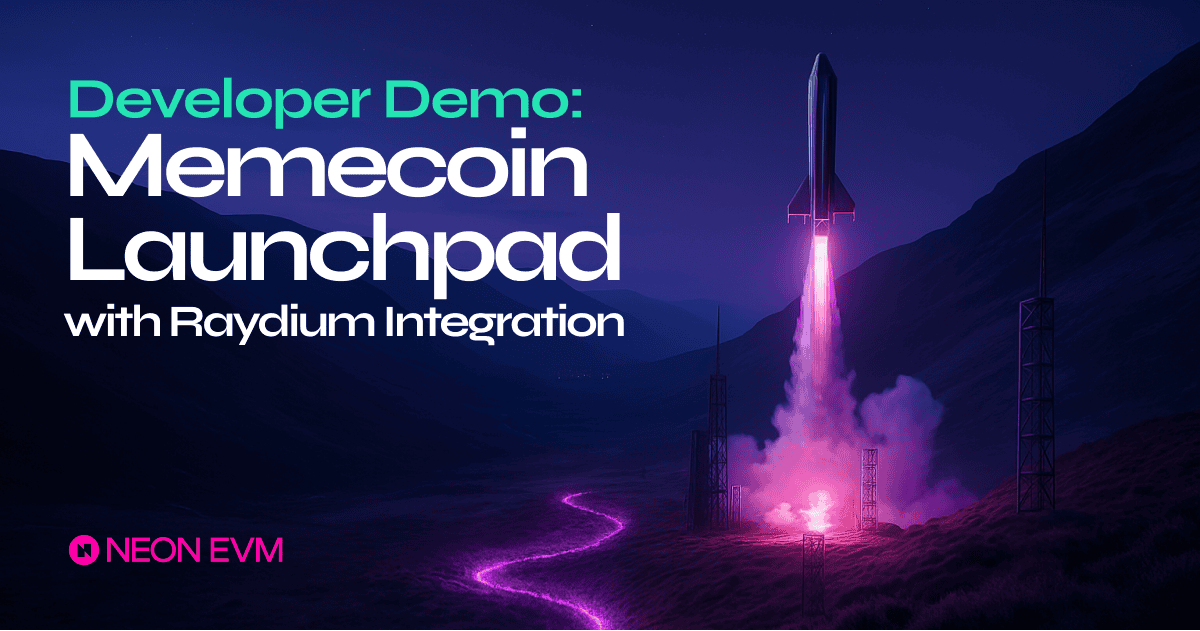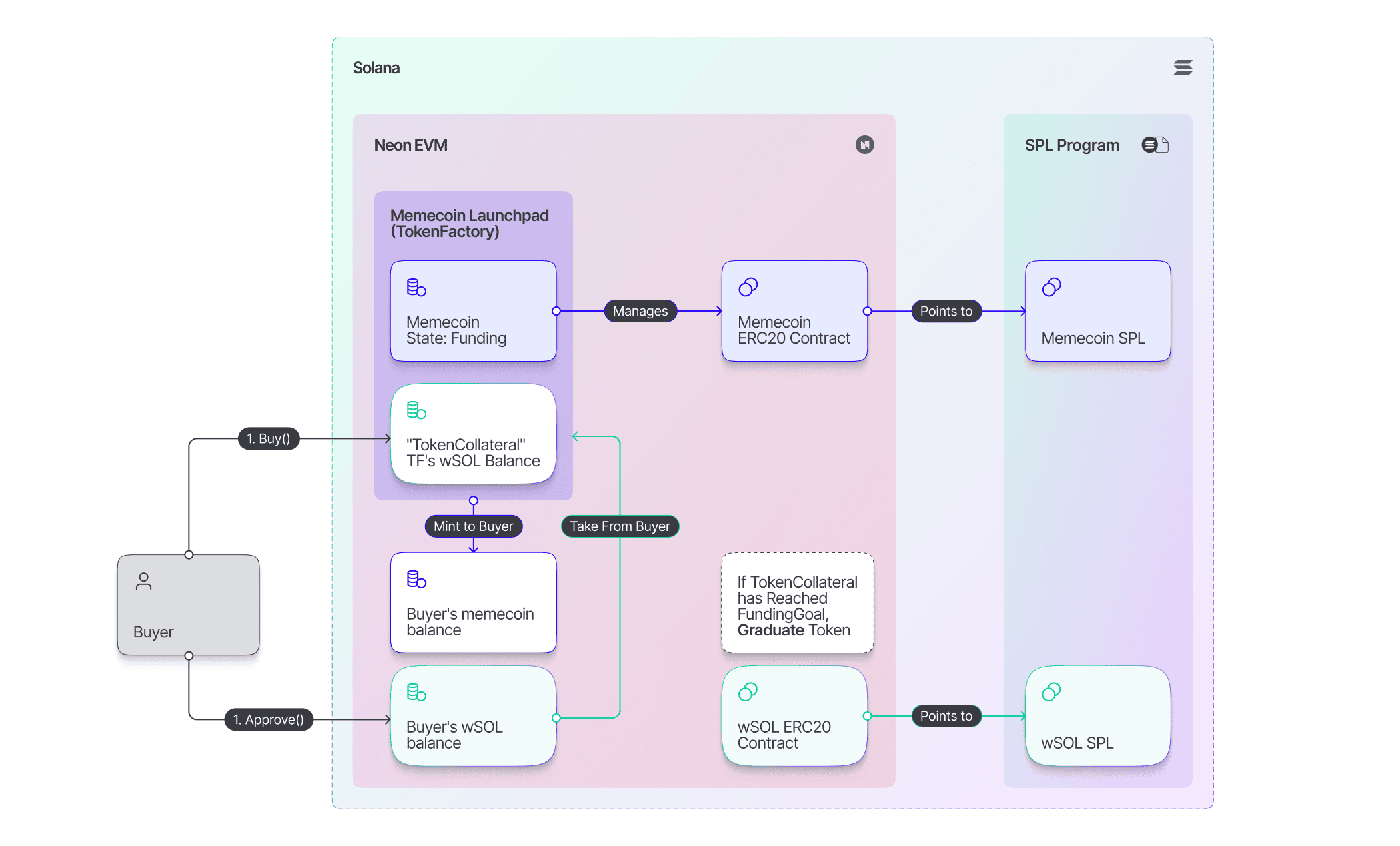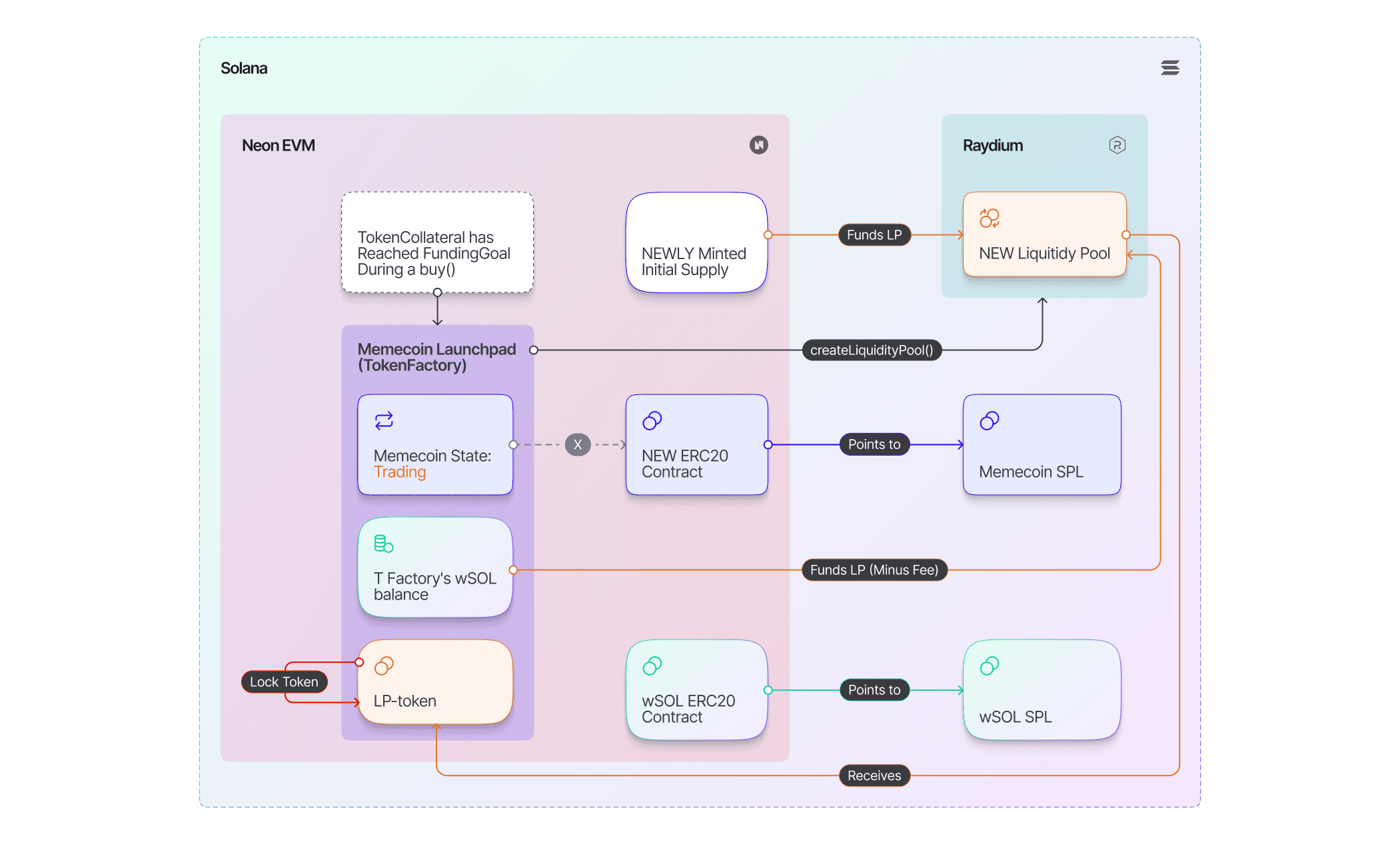Developer Demo: Memecoin Launchpad with Raydium Integration via Neon EVM

Born from internet culture and powered by community, memecoins have evolved into a full-blown movement. Launchpads have fueled their rise, making token creation fast, cheap, and easy. While Pump.fun stands as the undisputed leader, the trend doesn’t stop at Solana—think Four.meme on BSC and Zora on Base.
This step-by-step tutorial will show how an EVM memecoin launchpad can deploy on Solana via Neon, tapping into Solana’s liquidity and user base while retaining its familiar EVM stack and tooling.
Memecoin Launchpad on Neon EVM - Demo Walkthrough
As a preliminary step, you’ll need to deploy the Launchpad smart contracts on Neon EVM. You can do that using the deploy.js script provided in the repository (see the section below for all the developer links).
Our demo then guides you through the complete flow - from launching a meme token, enabling user interactions like buying and selling, to finally graduating the token by locking liquidity on Raydium via seamless interaction between Solidity contracts and Solana programs.
Check it out:
Architecture and Flow Diagrams
To help you visualize what’s happening under the hood, we’ve broken down the key stages implemented in the contracts. And when you're ready to dive into the code, the GitHub links are just a scroll away.
1. Create memecoin
The flow starts when a token creator calls createToken() on the Memecoin Launchpad. This deploys a new ERC20 contract on Neon EVM, which is automatically linked to a corresponding SPL token on Solana. This is where the token enters its "Funding" phase.

2. Buy memecoin
Users interact with the launchpad by approving and calling buy(), which transfers WSOL from the buyer to the launchpad. Meme tokens are minted, the internal WSOL balance is updated, and the system checks whether the funding goal has been reached. If so, the token is marked ready for graduation (see next step). Under the hood, Neon EVM allows the launchpad to interact with the WSOL ERC20 contract, which maps to the WSOL SPL token on Solana. Similarly, the memecoin’s ERC20 contract is linked to its SPL counterpart.

3. Graduate memecoin
Once the funding goal is met, createLiquidityPool() is called. This function handles Raydium DEX integration, automatically creating a CPMM liquidity pool, pairing the token with WSOL, and locking the LP tokens. At this point, the token transitions to the "Trading" state and becomes tradable on Solana.

Repository Links
For developers looking to get hands-on with this project, the complete contracts and scripts are on our GitHub for you to test:
- Detailed README: Launchpad README
Get Involved
Create your own solutions based on this showcase - the possibilities are endless! This demo demonstrates cross-chain interoperability between Solidity contracts and Solana programs on Neon EVM, and it's something you can actually run, test, and build on. Spin it up on devnet, see how it works, and push it further. If you've got questions, ideas, or just want to bounce thoughts around, hop into our Developer channel on Discord—we’d love to hear what you’re working on!
About Neon EVM:
Neon EVM is the first of its kind—a Network Extension on Solana—designed to seamlessly integrate Ethereum Virtual Machine (EVM) compatibility into Solana’s high-performance ecosystem. By operating natively within Solana’s base layer, Neon EVM provides Ethereum developers with a fast, high-throughput pathway to deploy their EVM dApps on Solana, without the need to rewrite their contracts in Rust.
For more information about Neon EVM and future updates, visit neonevm.org and connect with the community on Twitter or Discord.
Disclaimer: Solana is a trademark of the Solana Foundation. The use of the word ‘Solana’ in our materials solely reflects the Neon EVM products’ or services’ compatibility with the Solana network.
From the blog
The latest industry news, interviews, technologies, and resources.